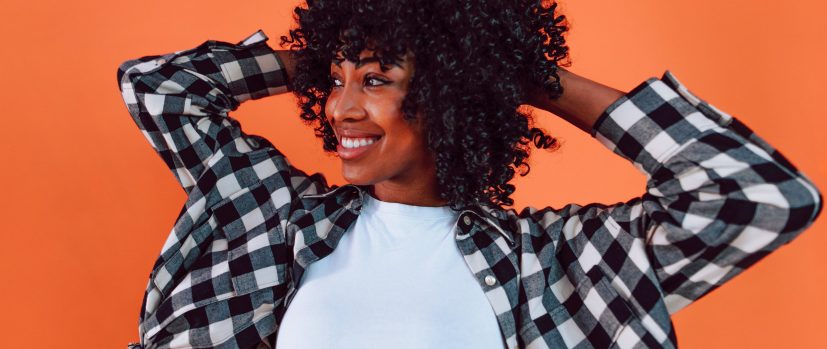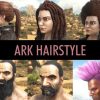A Compact Guide To Hair Weaves And Extensions
Weaves and extensions are a fun way to change up your look by adding volume and length to your hair. They are a particularly useful purchase that can last you years if cared for properly. It can save you time and money—especially if you have to attend special events on short notice.
These days weaves and extensions can come in a variety of natural hair colors such a brown, black, and blonde, to vibrant and bold colors of pink, silver, and electric blue. They can be straight, curly, wavy, or tightly coiled afro textures. The variations and styles you can choose from feel endless and exist to cater to every styling preference.
But choosing weave and hair extensions goes beyond just your favorite color and preferred texture. Most hairpiece bundles are designed with a specific way of attaching them to your head. Each of these methods has its own benefits and skill level needed to apply them properly.
With so much to choose from and understand in the hair business, it’s easy to get lost in the technical details. So, you need to properly understand what’s available to achieve your desired look. Here’s a quick breakdown of what you need to know about hair extensions to guide your buying decision:
1. Installs

Before choosing hair weaves or extensions, you must know how to properly attach or install them. It’s also a good idea to learn from experts such as Afro Lovely for more information and techniques.
In terms of applying weaves, some of the most popular installs include lace fronts, glue-ins, and clip-ins. The lace fronts are popular because they can blend in with your hairline and scalp and create a ‘real hair’ illusion.
Lace fronts are also longer-lasting than other types of weaves. Although they tend to be a bit pricier than other installs, you should still consider a lace front if you want a more natural-looking weave that can last for days.
Clip-in weaves are the go-to option when you just want to add a temporary ‘oomph’ factor to your hair. They can be used for parties, vacations, and other events to add length, volume, and style to your hair. The clip-ins are attached underneath your real hair via clips, and then combed out and blended into your hair to remove bumps and create an even silhouette.
2. Weave Types

In relation to installs, weaves also come in a variety of weaving styles that can be selected according to your comfort and preference. These weaves can either be sew-ins or crotchet attached to your hair. Both types of weaving styles will require you to have your real hair braided into cornrow tracks. This is needed to lay the foundation for the weave and hide your real hair behind the hairpieces.
Sew-in weaves are sewn into your hair using stitching. The hairpiece is laid on top of each cornrow track and is sewed into the hair with a stitching needle. This is done row by row until your entire head is covered by the weave. The process is similar to sewing a patch done on a piece of clothing.
The crotchet weave works in a similar sewing pattern but instead of a needle, a crochet hook is used. The hairpiece is attached to the hook which is then pulled into each cornrow and tightened. This forms a knot that can be adjusted to keep the hair in place.
Both the sew-in and crotchet weave are popular weave styles because they are low maintenance after installation. They’re also available in diverse hair patterns from beach waves to tight curls and even ruler-straight. If you take proper care of them, they can last up to two months.
3. Material
The material used to make weaves and extensions is dependent on the manufacturer and supply chain. It is also the major deciding factor that determines the price of the weave.
Most hair extensions are made of synthetic fiber blends that contain nylon, mesh, lace, and silk, among others. When combined, these materials make the hairpiece strong, long-lasting and have the best elasticity for smoother movement. This is why these fiber blends are also frequently used for African braiding hairstyles such as box braids and cornrows.
For instance, Kanekalon hair is made using a blend of PVC fiber and modacrylic fiber. These fibers make the extensions durable, allow the hair to be dyed into other colors, and give the bundles a natural feel.
4. Texture
Texture refers to the hair type, volume, and pattern of your strands. You can opt for fine and straight textures or thick voluminous and curly textures.
One of the most expensive materials used in making weaves is the real natural hair itself, commonly known as Remy or virgin hair. Remy’s hair is made from collected fine strands of real human hair with the cuticle still attached to it. The strands are then left unprocessed and sewn together to make a weave. If you want the highest quality of finely textured hair extensions, then you must consider getting Remy hair.
On the other hand, if you prefer sticking to hair that’s closer to your kinky or coiled hair, then Yaki hair will serve you well. Yaki hair is designed to mimic the texture of natural afro hair. This is the perfect texture to choose if you’d like to maintain your thick, curly, and blow-out-looking hairstyle.
Conclusion
Knowing the right material, texture, and application of weaves can help you choose better. Besides all the beautiful trendy colors, glamorous lengths, and styles, there are practical considerations such as texture, materials, and installation methods to consider.
All of these factors will impact how long the extensions are likely to last and what price point you can expect to pay. Whatever you decide, you can be sure that your extensions will be a prized beauty asset that you can whip into your hair for day-to-day styling or special events.
Weaves and extensions can change up your look without necessarily spending hours at the salon! Once you know how to properly install your weave or extension, you can use it anywhere and anytime you like.
Additional Reading:








